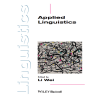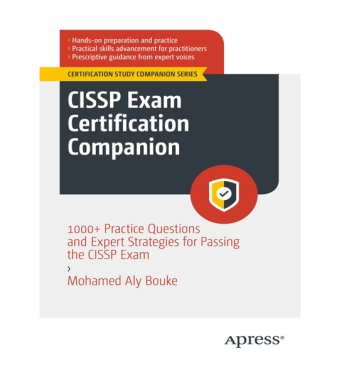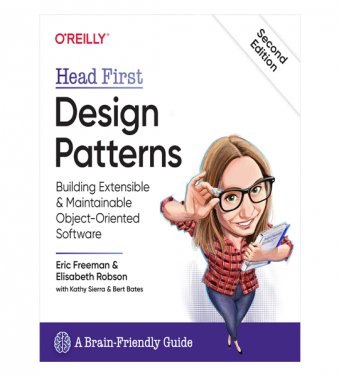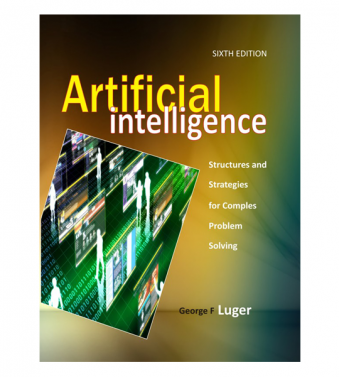
Artificial Intelligence and Causal Inference 1st By Momiao Xiong
0
₨1,576.00
Add to cartArtificial Intelligence and Causal Inference 1st By Momiao Xiong
₨1,576.00
Published March 8, 2022 by Chapman and Hall/CRC
394 Pages 72 B/W Illustrations
Pdf Printed Book On Demand
Category: Programming Languages
Tags: ahadees, ahsane, alfa app, aqwal e zareen, Artificial Intelligence and Causal Inference 1st By Momiao Xiong Online, arts materials, arts supplies, ashfaq ahmed, ashfaq ahmed books, attitude quotes, bahl online, bano (novel), bano qudsia, beautiful quotes, beauty quotes, best islamic books, best online book shop in Pakistan, best quality, best quality toys, best urdu books of all time, bestbookstores in Pakistan, book online purchase Pakistan, book stores in lahore, Books, books buy online in Pakistan, books buy online Pakistan, books online pakistan, books online purchase, books online purchase Pakistan, Books Online Shopping, Books Online Shopping in Pakistan, books title, brands in pakistan, bulleh shah, bulleh shah poetry in punjabi, Buy Books Online In Pakistan, buy books online pakistan, Buy online Books in Pakistan Cash on Delivery, buy school books online pakistan, caravan books, dan brown books, darussalam, death quotes, desi serial, diwan-e-ghalib, e-jang, easypaisa logo png, educational toys, elif shafak books, Ertugrul Ghazi, Faber-Castell, facebook shop, facebook store, fairy tales in urdu, farhat ishtiaq, feroz ul lughat, fiction meaning in urdu, ghalib poetry in urdu, ghous pak, happiness quotes, happy quotes, hashim nadeem, hazrat ali aqwal, hazrat ali quotes, holy quran, iflix pakistan, ilmi kitab khana, inter alia meaning in urdu, islamic books, islamic books in urdu, islamic history books in urdu, islamic names dictionary, islamic quotes, jahangir’s world times books, jazz cash, junaid jamshed, jwt magazine, kahaniyan, kahaniyan urdu, khadija mastoor, kitabain, kitabistan, lahore chat room, laptop bags, laptop price in pakistan, Largest Online Books Resource In Pakistan, latifay, manto, manzil online, masala morning, masala tv, math city, MBA Bookstore, mustansar hussain tarar, national book foundation, nemrah ahmed, nimra ahmed novels, nishan e haider, old islamic books in urdu, Online Book Bazar, Online Book Marketplace, online book price in pakistan, online book store pakistan, online book stores in Pakistan, online book stores pakistan, online books buy in Pakistan, online books buy Pakistan, online books delivery, online books order in pakistan, Online Books Outlet, online books pakistan, online books price in pakistan, online books purchase in pakistan, online books shopping in pakistan, online books shopping sites in pakistan, online bookshop near me, online bookstore in lahore, online bookstore pakistan, online bookstores in Pakistan, online bookstores pakistan, Online Islamic Bookstore, Online Medical Books, Online Novels Bookstore, order books online pakistan, orya maqbool jan, oxford university press pakistan, pakistan history books, pakistan online books shopping, Pakistan's largest Independent online bookstore, Pakistan's largest Online Bookstore, Pakistan's Premier Online Low Priced Books, personality quotes, pharma guide pakistan, pharmaguide, preface meaning in urdu, Proflowers.pk, programming quotes, PUBG Mobile Tips & Tricks, qasim ali shah, qasim ali shah books, quaid e azam quotes, qudrat ullah shahab, qudratullah company, quotes about change, quran with urdu translation text, rain quotes, ramadan quotes, ramzan ul mubarak, roald dahl books, romance, salajeet, saleem safi, sallallahu alaihi wasallam, sang e meel, sawal jawab, shahab nama, shairi, stationary, T series, tafseer ul quran, tareekh e islam, time pass, top online book shops in Pakistan, top online book stores in Pakistan, top online bookstores in Pakistan, trusted online bookstore, trusted online bookstores in pakistan, umera ahmad, umera ahmed, urdu bazar lahore, urdu books, urdu kahani, urdu kahaniyan, urdu lughat, urdu qaida, wasif ali wasif books, zarb ul misal, zarb ul misal in urdu
Book Description
Artificial Intelligence and Causal Inference address the recent development of relationships between artificial intelligence (AI) and causal inference. Despite significant progress in AI, a great challenge in AI development we are still facing is to understand mechanism underlying intelligence, including reasoning, planning and imagination. Understanding, transfer and generalization are major principles that give rise intelligence. One of a key component for understanding is causal inference. Causal inference includes intervention, domain shift learning, temporal structure and counterfactual thinking as major concepts to understand causation and reasoning. Unfortunately, these essential components of the causality are often overlooked by machine learning, which leads to some failure of the deep learning. AI and causal inference involve (1) using AI techniques as major tools for causal analysis and (2) applying the causal concepts and causal analysis methods to solving AI problems. The purpose of this book is to fill the gap between the AI and modern causal analysis for further facilitating the AI revolution. This book is ideal for graduate students and researchers in AI, data science, causal inference, statistics, genomics, bioinformatics and precision medicine.
Key Features:
- Cover three types of neural networks, formulate deep learning as an optimal control problem and use Pontryagin’s Maximum Principle for network training.
- Deep learning for nonlinear mediation and instrumental variable causal analysis.
- Construction of causal networks is formulated as a continuous optimization problem.
- Transformer and attention are used to encode-decode graphics. RL is used to infer large causal networks.
- Use VAE, GAN, neural differential equations, recurrent neural network (RNN) and RL to estimate counterfactual outcomes.
- AI-based methods for estimation of individualized treatment effect in the presence of network interference.
Table of Contents
Chapter 1 Deep Neural Networks
Chapter 2 Gaussian Processes and Learning Dynamic for Wide Neural Networks
Chapter 3 Deep Generative Models
Chapter 4 Generative Adversarial Networks
Chapter 5 Deep Learning For Causal Inference
Chapter 6 Causal Inference in Time Series
Chapter 7 Deep Learning for Counterfactual Inference and Treatment Effect Estimation
Chapter 8 Reinforcement Learning and Causal
Author(s)
Biography
Momiao Xiong, is a professor in the Department of Biostatistics and Data Science, University of Texas School of Public Health, and a regular member in the Genetics & Epigenetics (G&E) Graduate Program at The University of Texas MD Anderson Cancer Center, UTHealth Graduate School of Biomedical Science. His interests are artificial intelligence, causal inference, bioinformatics and genomics.
Be the first to review “Artificial Intelligence and Causal Inference 1st By Momiao Xiong” Cancel reply
Related Products
Python Crash Course 2nd: A Hands-On, Project-Based Introduction to Programming
Rated 5.00 out of 5
1



























































































































































































































































































































































































































































































































































































































































































Reviews
There are no reviews yet.